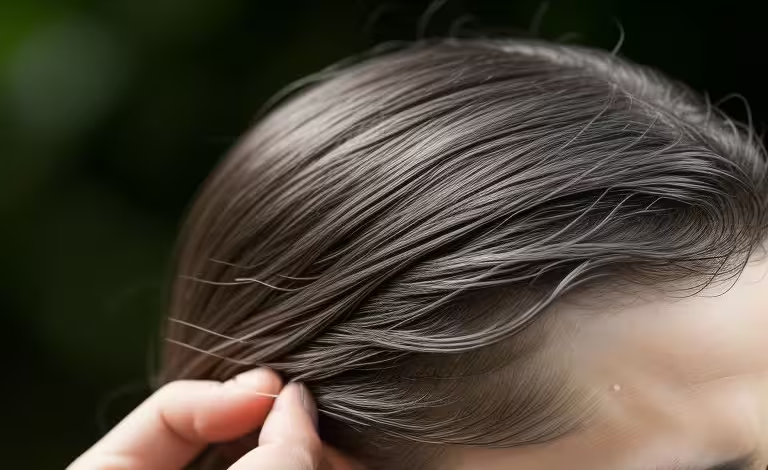
Head Lice: Everything You Need to Know to Keep Your Scalp Bug-Free
Dealing with head lice can be quite the nuisance. These tiny insects can cause itching, discomfort, and a lot of stress. But don’t worry! In this guide, we’ll cover everything you need to know about head lice, from prevention and identification to treatment and myths. Let's dive in and make sure you're armed with all the facts to tackle these pesky critters.
What Are Head Lice?
Head lice are small, wingless insects that live on the scalp and feed on human blood. They are about the size of a sesame seed and can be a real hassle to get rid of. Lice are most common in children, but anyone can get them. They spread primarily through direct head-to-head contact.

How Do You Get Head Lice?
Lice don’t jump or fly; they crawl. This means they spread mainly through close contact. Here are some common ways people get head lice:
- Head-to-head contact: This is the most common way lice spread. Kids often get lice at school, sleepovers, or during playdates.
- Sharing personal items: Using someone else’s comb, brush, hats, or hair accessories can spread lice.
- Shared spaces: Lice can sometimes spread by lying on beds, couches, pillows, or carpets that an infested person recently used.
Signs and Symptoms
Wondering if you or your child has lice? Look out for these signs:
- Itching: The most common symptom is itching, caused by an allergic reaction to lice bites.
- Tickling feeling: You might feel something moving on your head.
- Sores on the scalp: Scratching can cause sores, which may become infected.
- Visible lice or nits: You might see tiny lice or their eggs (nits) on hair shafts, close to the scalp.
How to Check for Head Lice
To check for head lice, you'll need a fine-toothed lice comb and good lighting. Here's a step-by-step guide:
- Wet the hair: Wetting the hair makes it easier to comb through and spot lice.
- Section the hair: Divide the hair into small sections.
- Comb through each section: Start at the scalp and pull the comb through to the ends of the hair.
- Wipe the comb: After each pass, wipe the comb on a white tissue or paper towel to look for lice or nits.
- Examine the scalp: Look closely at the scalp and behind the ears where lice like to hide.
Treatment Options
If you find lice, don’t panic! There are several treatment options available:
Over-the-Counter Treatments
- Permethrin lotion: This is a common treatment that kills live lice but not nits.
- Pyrethrin-based products: These are made from chrysanthemum flowers and are effective against live lice.
Prescription Treatments
- Ivermectin lotion: Kills most head lice, including those resistant to over-the-counter treatments.
- Spinosad topical suspension: Kills live lice and nits.
- Malathion lotion: Effective against lice and nits, but should be used with caution.
Home Remedies
Some people prefer natural treatments, though their effectiveness varies:
- Wet-combing: Regularly combing wet hair with a fine-toothed lice comb.
- Essential oils: Tea tree oil and lavender oil are popular, though more research is needed on their effectiveness.
- Mayonnaise or olive oil: These are sometimes used to smother lice, but results can be inconsistent.
Preventing Head Lice
Preventing lice can be tricky, but here are some tips to reduce the risk:
- Avoid head-to-head contact: Teach kids to avoid close contact during play.
- Don’t share personal items: Remind kids not to share combs, hats, or hair accessories.
- Regular checks: Periodically check your child’s hair for lice, especially if there’s an outbreak at school.
Myths and Facts About Head Lice
There are many myths about lice. Let’s bust a few:
- Myth: Lice prefer dirty hair. Fact: Lice don’t care if hair is clean or dirty. They just need a warm place to live.
- Myth: You can get lice from pets. Fact: Lice only live on humans. You can’t get them from dogs, cats, or other animals.
- Myth: Lice can jump or fly. Fact: Lice can only crawl. They spread through direct contact.
Dealing with Stigma
There’s often a stigma associated with lice, but it’s important to remember that anyone can get them. Having lice doesn’t mean someone is dirty or unhygienic. Open, honest communication and education can help reduce this stigma.
Frequently Asked Questions (FAQs)
How long do lice live?
Lice can live up to 30 days on a person’s head. Without a host, they die within 1-2 days.
Can you prevent lice with shampoo?
No shampoo can fully prevent lice. However, some shampoos contain essential oils that might repel them.
How long should you avoid close contact after treatment?
Avoid close contact until all lice and nits are gone. This may take several days and a few treatments.
Can lice survive on bedding?
Lice can survive on bedding for 1-2 days. Wash all bedding and clothing used by the infested person in hot water and dry on high heat.
Are lice becoming resistant to treatments?
Some lice have developed resistance to common over-the-counter treatments. Prescription treatments or multiple methods might be necessary.
Final Thoughts
Dealing with head lice can be frustrating, but with the right knowledge and tools, you can effectively manage and prevent infestations. Remember to stay calm and patient, as it may take a few tries to completely get rid of lice. Keep educating yourself and others, and don't hesitate to seek help if needed. Lice are annoying, but they're not invincible!
References
By following these guidelines and tips, you can ensure that your scalp remains free of lice and you stay informed on the best ways to handle any potential infestations.

